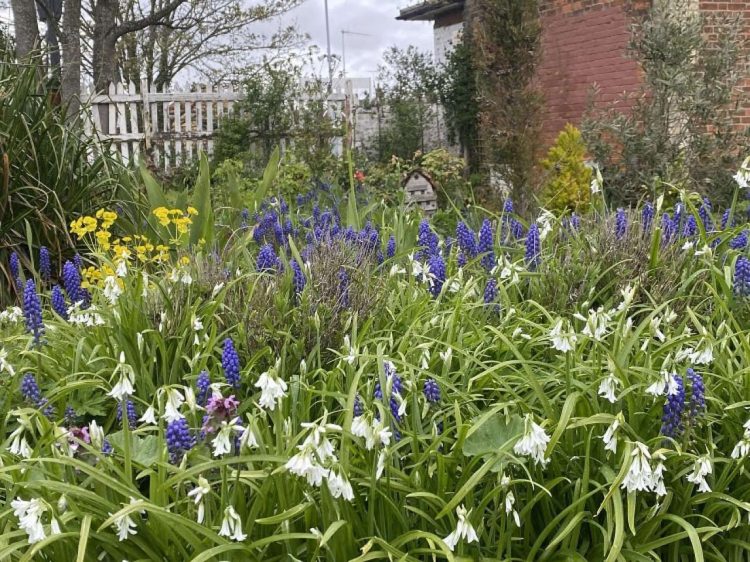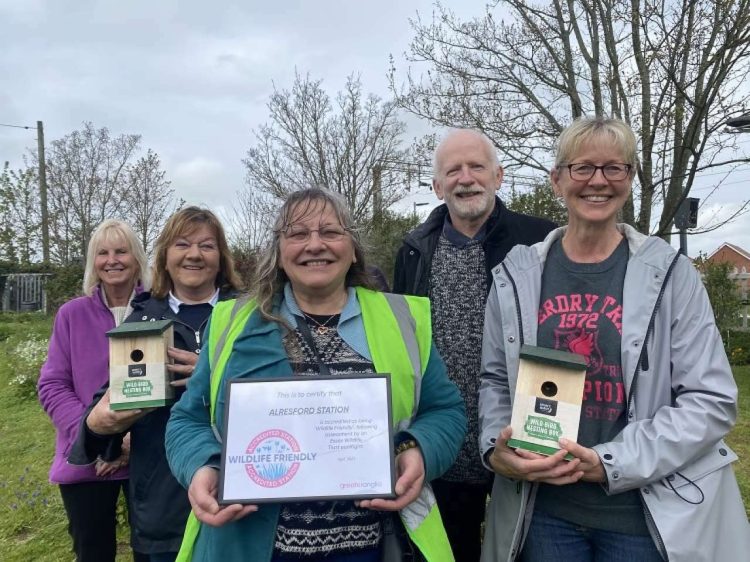Four Essex railway stations have received ‘Wildlife Friendly’ accreditation, recognising the efforts of community volunteers to improve biodiversity and support nature.
Greater Anglia has partnered with the region’s Wildlife Trusts to formally recognise the achievements of volunteer ‘station adopters’ to create wildlife havens at stations across its network through the new ‘Greater Anglia Wildlife Friendly Stations Accreditation Scheme.’
Alresford, Bures, Great Bentley and Weeley became the first stations in Essex to receive the awards, having been assessed by an Essex Wildlife Trust ecologist to check how well they support local flora and fauna.
Each station is looked after by a team of volunteer ‘station adopters‘, who are members of the community who work with Greater Anglia – which runs similar schemes in Suffolk and Norfolk – to improve their local station for community benefit. The teams have focused on creating wildlife friendly areas to help support fragile local wildlife populations.
At Alresford, volunteers look after a large area, including borders along both platforms and the area around the old station master’s house. They have created a community garden with native plants and wildflowers, complete with a children’s area; hidden fairy houses; a wild wood; a pond; a ‘dead hedge’ habitat for insects, small invertebrates and hedgehogs; a slow worm habitat and a secret garden.

A large sculpture which provides a home for bees has been installed at the entrance to the station, created in partnership with Alresford primary school, Cobnuts Co-operative, the Essex and South Suffolk Community Rail Partnership and the Bee Friendly Trust.
The ecologist’s report praises Bures station volunteers for creating habitat for parasitic wasps, ground-nesting bees such as the white-tailed bumblebee, garden bumblebee, carpenter, leaf-cutter and mason bees, and hedgehogs.

Volunteers at Great Bentley have installed an insect hotel and bee-friendly planters and Weeley station is cared for by Weeley In Bloom, who have created a garden at the entrance to the station and worked with a local business to create a wild area on the approach to the station.

The work of the volunteers has also been supported by the Essex and South Suffolk Community Rail Partnership and the Bee Friendly Trust.
Each assessment also offers tips and advice for how to make the stations more wildlife friendly and the reports can also be used as examples of best practice to help spread good ideas around all Greater Anglia’s stations.
Rail stations in East Anglia are increasingly becoming havens for local wildlife thanks to the efforts of over 300 volunteers who last year transformed over 7,400 square metres of land into thriving wildlife gardens.
In a recent survey, Greater Anglia station adopters reported a wide range of creatures visiting their stations including many different types of butterflies as well as bees, slow worms, bats, foxes, toads, lizards, deer and many varieties of birds, recording more than 200 different species.
Action to reduce waste, support local wildlife and cut the carbon footprint of railway stations will be informed by the industry’s Sustainable Stations: Best Practice Guide, which details ways in which train operators can meet this commitment in support of global goals of decarbonisation, reducing waste and supporting local plant and animal life.
James Hogg, Development Officer at the Norfolk Wildlife Trust who are the lead Trust for the initiative, said: “The alarming decline in the abundance of wildlife and the plight of species under threat means that just protecting the nature we have left is not enough; we need to put nature into recovery, and to do so at scale and with urgency.
“This project with Greater Anglia is a fantastic example of how people can transform nature-poor areas into new nature-rich places – and change the way we think about land, seizing opportunities to help nature outside traditional nature reserves.”
Greater Anglia’s Customer and Community Engagement Manager, Alan Neville, said, “We’re delighted to partner with the region’s wildlife trusts to formally recognise the valuable work of our station adopter volunteers in supporting wildlife and improving their local environment.”
“I’d like to congratulate the volunteers at these stations on receiving this recognition and thank them for the incredible work that are doing that makes each station a wonderful place to be, that is also contributing to support biodiversity locally.”





Responses